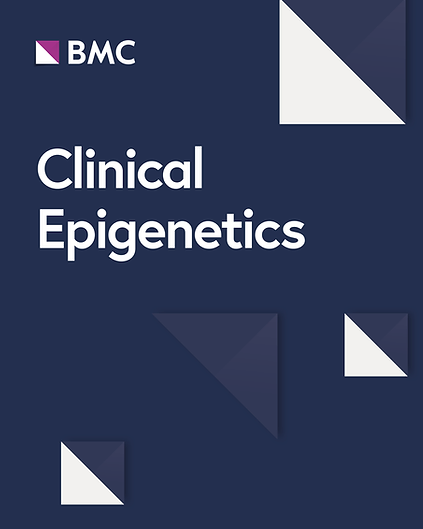Causal association of epigenetic age acceleration and risk of subacute thyroiditis: a bidirectional Mendelian randomization study
IF 4.8
2区 医学
Q1 GENETICS & HEREDITY
引用次数: 0
Abstract
Epigenetic age accelerations (EAAs) are a promising new avenue of research, yet their investigation in subacute thyroiditis (SAT) remains scarce. Our study endeavors to fill this void by exploring the potential causal association between EAAs and SAT. Our study utilized publicly available genome-wide association study (GWAS) data of European ancestry to conduct a bidirectional Mendelian randomization (MR) study. Five MR methods were employed to measure causal association between EAAs and SAT multiple analyses were utilized to perform quality control. Our study evaluated causal association between SAT and four EAAs, included GrimAge acceleration (GrimAA), Hannum age acceleration (HannumAA), PhenoAge acceleration (PhenoAA), intrinsic epigenetic age acceleration (IEAA). Results showed that there is a significant causal association between PhenoAA and SAT (OR 1.109, 95% CI 1.000–1.228, p = 0.049, by IVW method). On the contrary, SAT was associated with IEAA (OR 0.933, 95% CI 0.884–0.984, p = 0.011, by IVW method; OR 0.938, 95% CI 0.881–0.998, p = 0.043, by weighted median method). Leave-one-out sensitivity analysis, heterogeneity test, pleiotropy test, and MR-PRESSO analysis provide good quality control. The bidirectional MR analysis concluded that an increase in PhenoAA was correlated with a higher risk of SAT, indicating a potential causal relationship between PhenoAA and risk of SAT. Conversely, SAT was found to be closely associated with IEAA, suggesting that SAT may accelerate the aging process. Slowing down biological aging has emerged as a new research direction in curbing SAT.表观遗传年龄加速与亚急性甲状腺炎风险的因果关系:一项双向孟德尔随机研究
表观遗传年龄加速(EAAs)是一个很有前途的新研究方向,但对其在亚急性甲状腺炎(SAT)中的应用的研究仍然很少。我们的研究试图通过探讨EAAs与亚急性甲状腺炎之间的潜在因果关系来填补这一空白。我们的研究利用公开的欧洲血统全基因组关联研究(GWAS)数据开展了一项双向孟德尔随机化(MR)研究。我们采用了五种 MR 方法来测量 EAAs 与 SAT 之间的因果关系,并利用多重分析来进行质量控制。我们的研究评估了 SAT 与四种 EAA 之间的因果关系,包括 GrimAge 加速(GrimAA)、Hannum Age 加速(HannumAA)、PhenoAge 加速(PhenoAA)和内在表观遗传年龄加速(IEAA)。结果显示,PhenoAA 与 SAT 之间存在明显的因果关系(OR 1.109,95% CI 1.000-1.228,P = 0.049,采用 IVW 法)。相反,SAT 与 IEAA 相关(IVW 法,OR 0.933,95% CI 0.884-0.984,p = 0.011;加权中值法,OR 0.938,95% CI 0.881-0.998,p = 0.043)。留空敏感性分析、异质性检验、多向性检验和 MR-PRESSO 分析提供了良好的质量控制。双向 MR 分析得出结论,PhenoAA 的增加与 SAT 风险的增加相关,表明 PhenoAA 与 SAT 风险之间存在潜在的因果关系。相反,研究发现 SAT 与 IEAA 密切相关,这表明 SAT 可能会加速衰老过程。延缓生物衰老已成为遏制 SAT 的一个新的研究方向。
本文章由计算机程序翻译,如有差异,请以英文原文为准。
求助全文
约1分钟内获得全文
求助全文
来源期刊

Clinical Epigenetics
ONCOLOGY-
自引率
5.30%
发文量
150
期刊介绍:
Clinical Epigenetics, the official journal of the Clinical Epigenetics Society, is an open access, peer-reviewed journal that encompasses all aspects of epigenetic principles and mechanisms in relation to human disease, diagnosis and therapy. Clinical trials and research in disease model organisms are particularly welcome.
 求助内容:
求助内容: 应助结果提醒方式:
应助结果提醒方式:


